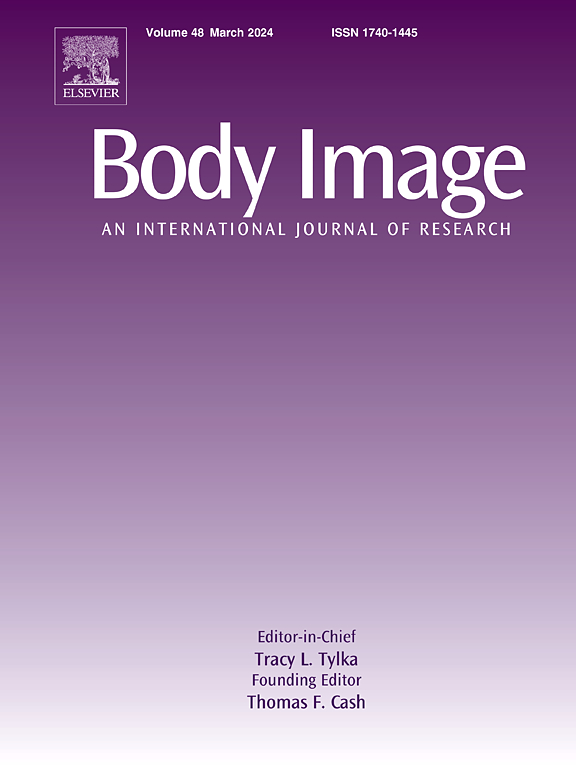Does every body matter? The relationship between engagement with body-positive and appearance-ideal content on instagram and aspects of positive and negative body image
IF 5.4
1区 心理学
Q1 PSYCHIATRY
引用次数: 0
Abstract
Body-positive content is prevalent on social networking sites (SNS). Research shows that engagement with body-positive content reduces aspects of negative body image and increases aspects of positive body image. However, the mechanisms accounting for the impact of body-positive content on body image are not well understood. In this study, we used the tripartite influence model (Thompson et al., 1999) and acceptance model of intuitive eating (Avalos & Tylka, 2006) to examine how engagement with appearance-ideal and body-positive content on Instagram relates to aspects of negative and positive body image. Structural equation modelling of cross-sectional data from 454 female participants (Mage = 22.65) revealed that engagement with appearance-ideal content was indirectly associated with (higher) negative and (lower) positive body image through lower internal body orientation and body acceptance by others, and (in case of negative body image) through higher thin-ideal internalisation. Engagement with body-positive content predicted (higher) positive body image but not negative body image; appearance comparison, thin-ideal internalisation, internal body orientation, and body acceptance by others did not mediate this effect. These findings illustrate the value of combining elements of the tripartite influence model and acceptance model of intuitive eating to understand the relationship between SNS and body image.
每个人都重要吗?参与instagram上的身体积极和外表理想内容与积极和消极身体形象方面的关系
在社交网站(SNS)上,身体正面的内容非常普遍。研究表明,与身体正面的内容接触会减少消极的身体形象,增加积极的身体形象。然而,身体正面内容对身体形象影响的机制尚不清楚。在本研究中,我们使用了三方影响模型(Thompson et al., 1999)和直觉饮食的接受模型(Avalos &;Tylka, 2006),以研究Instagram上对外表理想和身体积极的内容的参与与消极和积极的身体形象方面的关系。对来自454名女性参与者(Mage = 22.65)的横截面数据进行结构方程建模,结果显示,通过较低的内在身体取向和他人对身体的接受程度,对外表理想内容的参与与(较高)消极和(较低)积极的身体形象间接相关,(在负面身体形象的情况下)通过较高的瘦理想内化程度间接相关。积极身体内容的参与预测(较高)积极身体形象,但不预测消极身体形象;外表比较、瘦型理想内化、内在身体取向和他人对身体的接受并没有中介这种影响。这些发现说明了将三方影响模型和直觉饮食接受模型的要素结合起来理解社交媒体与身体形象之间的关系的价值。
本文章由计算机程序翻译,如有差异,请以英文原文为准。
求助全文
约1分钟内获得全文
求助全文
来源期刊

Body Image
Multiple-
CiteScore
8.70
自引率
28.80%
发文量
174
期刊介绍:
Body Image is an international, peer-reviewed journal that publishes high-quality, scientific articles on body image and human physical appearance. Body Image is a multi-faceted concept that refers to persons perceptions and attitudes about their own body, particularly but not exclusively its appearance. The journal invites contributions from a broad range of disciplines-psychological science, other social and behavioral sciences, and medical and health sciences. The journal publishes original research articles, brief research reports, theoretical and review papers, and science-based practitioner reports of interest. Dissertation abstracts are also published online, and the journal gives an annual award for the best doctoral dissertation in this field.
 求助内容:
求助内容: 应助结果提醒方式:
应助结果提醒方式:


